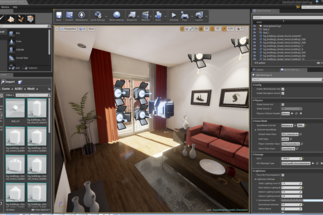
Equipment
Modernste Simulationstechnik ermöglichte es den Wissenschaftlern, sensorische Reize in einer virtuellen Umgebung zu kreieren, diese konstant zu halten oder ganz gezielt zu manipulieren. Es konnten sogar Experimente gestaltet werden, die in der Realität nicht möglich wären. Einen Überblick der Technologie finden Sie hier:





